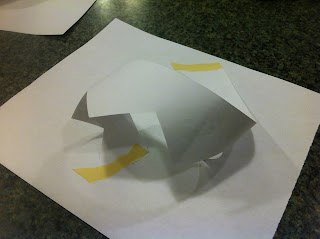Here's more info about how that works:
Temperature.... this first firing, or BISQUE fire, is to cone 06- about 1820 degrees!
TIME.... the kiln will take up to 9 hours to reach high temp. then hours more to cool off. I won't open it until MONDAY afternoon.
Result- the high temperature burns off any water and organic matter in the clay, and transforms the structure of the clay itself into a stronger, waterproof and permanent material. Ceramics last......
How the KILN works....
 |
| Our kiln, in room H100 |
 | |
| Starting to load our clay pieces into the kiln.... |
 | |
| Showing the heating elements HOT! |
Here's a quick video with some more info about clay and firing...






























